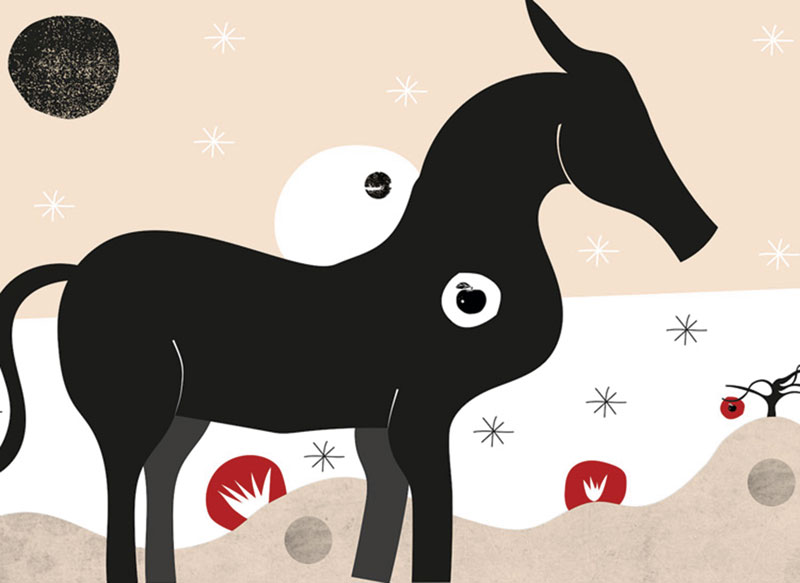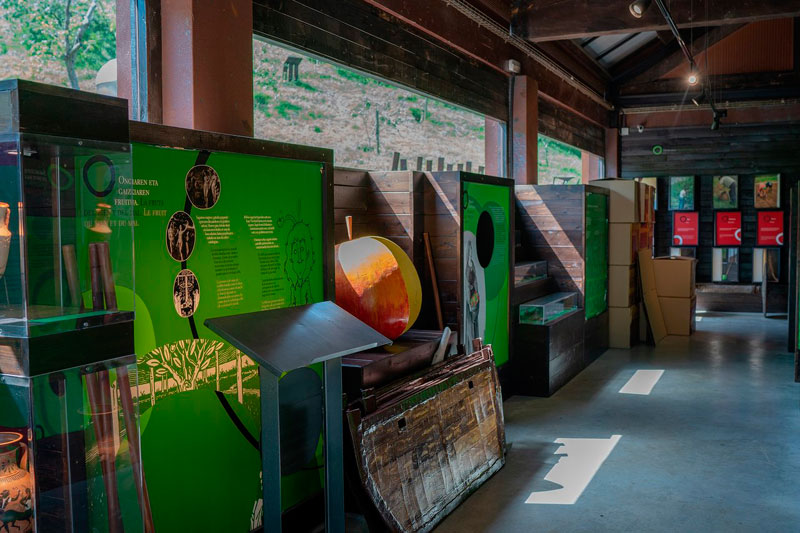
- The apples of that dark still life that our grandparents had hung on the wall of the living room, have eleven cousins, above all – but not only – in painting, witnesses of the presence of this fruit in art and in general in our lives and imaginary. We've brought to these pages some of those creative works, from known legends.

Most of us would list three or four science fiction stories where an apple is placed as the protagonist. Seduced by a talking snake, Eve and Adam ate the “forbidden fruit”; although the book Genesis does not mention that it is an apple, in the subconscious of many it has been so recorded. According to the Christian doctrine, the original sin was to bite him.
We could also cite the apple that fell on the head of the scientist Isaac Newton, a fundamental fact for the formulation of the theory of gravity, although in this case it cannot be demonstrated whether it really happened or, on the contrary, it was a trick to give a more earthly touch to the invention of that theory.
Below the apple tree, Newton was reading a book, and an apple from the tree was about to fall on his head. That's the image that you see on the first logo of the multinational Apple on the Internet. Designed by Ronald Wayne in 1976, shortly after he had the famous image of the bitten apple, which was clearly more effective than the original to recognize it at the first blow.
Gilen Tell, a hero of Switzerland’s independence, shot the apple his son had in his head in response to the drunkenness of the infamous Hermann Gessler, Mr. de Altdorf. It happened on November 18, 1307, according to legend. That very day is celebrated in Britain on the “Cider Day”. In fact, it is celebrated around the world on June 3 to symbolize the beginning of the cider season.
According to Greek mythology, the goddess Eris, always willing to provoke chaos, irritated by not being invited, presented herself to the wedding feast between Tetis and Peleo and threw a golden apple in the middle of the table where Hera, Athena and Aphrodite were sitting. “For the most beautiful,” he wrote. Then the three goddesses started fighting for a naturally sized fruit. Because of a troubled love story, the apple of discord was the cause of the Trojan War.
It is curious, but we would say that in different artistic expressions, and perhaps especially in stories and legends, the figure of the apple and its symbolism is more related to women, to often represent “evil” in the traditional sense, as in the history of the witches, Snow White and the seven enanites.
Goddesses and entrepreneurs
“For the best goddess.” This is the title of one of the drawings in the collection of illustrations “The Legend of the Cider” by artist Paul Lataburu. The Astarbe steelworks of Astigarraga and the Faculty of Fine Arts of the UPV/EHU drive Sagararte, a collection that collects excerpts from Greek, Roman and Celtic mythology, making a nod to the trajectory of the cider in our environment. Images from the 2019 harvest Astarbe.eus are available on the web, along with works from other editions.

Another sidrería, the Campo de Hernani, opened two years ago an exhibition on the lezoar of María de Labayen. In the 16th century, this woman sold cider made from apples from her own harvest. He married Captain Miguel de Arrieta, who in his widowhood, without money, participated in a naval association using as money the cider that cost him membership. When one of the vessels went to Newfoundland, the San Sebastian authority required cider, arguing that only the one under its control could be made on board. Sheltered by the Outlaws, Maria de Labayen filed a complaint and won the trial. The San Sebastian Council had to return the 24 barrels of cider seized.
This woman is, precisely, one of the four protagonists of the exhibition Women entrepreneurs in the cider. María de Echevarría, Ana de Beroiz and Fagola and María Josefa de Orobio are the other three people who worked around cider and who were despised as women. XVI-XVIII. The travelling exhibition, accompanied by the illustrations of Jokin Mitxelena, reveals the intricacies of the cider of the 15th and 16th centuries. This exhibition is based on an investigation carried out by historian Lurdes Odriozola and created in collaboration with the Sagardoetxea Museum of Astigarraga. He's been at Ezkio's Igartubeiti farmhouse during the summer, and at Elciego's house of culture in December.
15th anniversary
Opened in 2006, the Sagardoetxea Museum of Astigarraga will be 15 years old in September 2021. Managed by the brand “Sagardoaren Lurraldea”, it organizes throughout the year many activities, in addition to an exhibition with information panels, audio-visual, lagar models and tools of the shoppers: workshops, cultural events, cider tastings, excursions... Next to the museum there is an apple tree, and everyone who wants can take a walk among the trees at any time, stopping in the informative panels that you will find along the way. Space offers the opportunity to see how apples are in each age and learn about cider. From there, the “Camino de la Sidra de Santiagomendi” offers a flat tour of 6.5 kilometers through the villages of lagares that produced cidra.

Learn more about the Museum's offer sagardoarenlurraldea.eus on the web. In addition, dozens of books, magazines, audio-visual and historical documents can be consulted at the documentation centre db.sagardoetxea.eus.
“Cider drinker”
Still lifes by Vincent van Gogh “Dead Nature with Apples” or by William Sidney Mount “Apples on Tin Boats”, by Gustave Courbet “Red Apples at the Feet of a Tree”, “Apples, Orugas and Butterflies” by Vladimir Kush Surte-reale. We can find countless paintings representing apples. Fewer have cider as a theme, but there are some such as the “Fall in New England, cider” by British landscape designer George Henry Durrie. Or “Sagardo edalea” painted by Joaquín Sorolla and Bastida on a trip to Euskal Herria in 1910, reflecting the scene of a Lekeitio hostel.
As far as film is concerned, the film “Dantza” (2018) by Telmo Esnal has come to the fore, to the extent that several choreographies have as their axis the apple, such as the apple dances of Urkiolamendi or the almute dances and zortzikos of the Igartubeiti lagra caserío. Esnal and Asier Altuna themselves have a special short film, Txotx, which reveals the darkest part of the sidrerías. You can see it on the Kimuak project website.

reflecting the scene of a Lekeitio hostel.
“In street art you also have examples,” says a colleague, “as the source of the ‘Monument to the Cider’ of Usurbil.” Nor can we fail to mention the graphic strips and paintings of Antton Olariaga. What would be a cider season without Zakilixut!